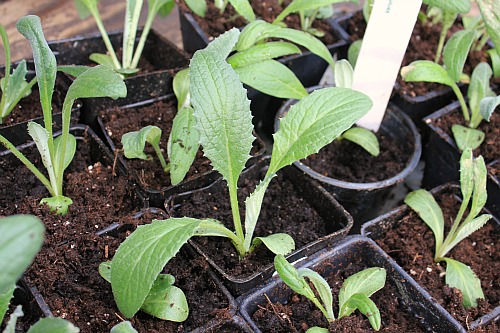

In my case, I just happen to be starting two types of seeds that require unusual steps none of my other seeds need this TLC. Now, an important thing for you to remember in regard to all of these techniques is that you don’t have to automatically know which technique to use, or even IF the seeds you want to start require any of this. That causes them to swell, which in turn breaks up the outer seed coat. However, if you’ve ever had trouble getting any of these to germinate, an easy solution is to soak the seeds in water overnight before planting them. But according to my research, others include morning glories, lupines, sweet peas and nasturtiums. Which types of seeds require scarification? The only type of seed I’ve ever had to nick or scrape was New Zealand spinach.


What does scarification involve? The short answer is nicking the coat by using either a piece of sandpaper or an emery board. The whole point of a seed having a tough coat is to prevent it from germinating at the wrong time of year. Scarification: Some seeds that have particularly hard coats, which can make it difficult for them to germinate. This apparently makes a huge difference in germination so I’m going for it. Be sure to mark your calendar so you remember to take them out of the fridge after a month! At that point, you can start your seeds as you normally would. Place the covered seeds in a labeled plastic bag, seal it, place the bag into an airtight container and set it in the refrigerator. Then you sprinkle the seeds onto the towel or filter, and fold it around the seeds. It turns out, the seeds should go through this period for one month! (planning ahead is a good idea, apparently) What’s the procedure? First you dampen either a paper towel or a coffee filter (I used the latter) and place it on a plate. The seed packet recommends a cold/ moist stratification period so I figured I should look into this. I’m planning to grow my own milkweed plants to attract butterflies to my garden. Stratification: This technique is similar to vernalization in that you are again trying to trick your seeds into thinking winter is ending and spring is about to begin, so you are duplicating those types of conditions. Then you can officially plant them in the garden and - hopefully - have a bountiful harvest! Two weeks before it’s time to transplant the artichoke seedlings out into the garden, place them outside where they’ll be exposed to cool temperatures. After those two weeks have elapsed, go ahead and start the seeds indoors just as you normally would. How does vernalization work? About two weeks before you want to start the seeds, place them in an airtight container that has some lightly moistened peat moss, and put the container into the refrigerator. This is particularly applicable to those who want to grow artichokes but live in a zone where they have to grow them as annuals (typically USDA zone 6 and below). Vernalization: This is the process of exposing seeds to cold temperatures in order to fool them into thinking they’ve been through a winter so they should form flower buds. I thought it might be helpful to define and elaborate on all three terms here so everything is together in one place for you: There are two other seed-starting terms that you might find both interesting and useful when growing certain types of plants: stratification and scarification. I recently wrote about using “vernalization” for starting artichoke seeds.


 0 kommentar(er)
0 kommentar(er)
